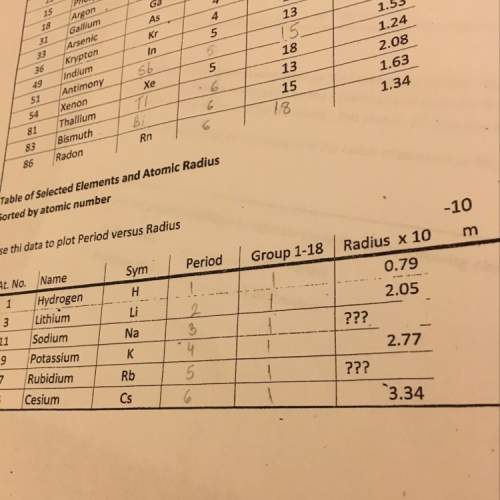
Chemistry, 09.04.2021 04:00 yesseniaroman21
The strength of an acid is affected by the polarity of the bond connected to the acidic hydrogen. The more highly polarized this bond, the more easily the hydrogen is ionized. Electronegative atoms or groups of atoms present in the structure of an acid can act to withdraw electrons and produce additional polarization. Two common groups of acids to which this principle can be applied are oxoacids and carboxylic acids. In the latter group, the length of the hydrocarbon chain in a carboxylic acid has very little effect on acid strength Longer chains may slightly diminish acidity. Bases act as hydrogen ion acceptors because of the unshared electron pass in their structure. Any group present in a base that withdraws electrons makes these electron pairs less available to accept a hydrogen ion. In contrast, any group that can act as an electron donating group such as hydrocarbon groups (usually represented as II) can increase the base strength. Thus, the addition of electronegative atoms or groups of atoms to the structure of a base decreases the base strength and electron donating groups increase base strength. Many common weak bases are derivatives of ammonia, in which H atom(s) of NH_2 are replaced with other groups.
Arrange the following oxoacids in order of decreasing acid strength. Rank from strongest to weakest acid.
1. HBrO
2. HClO
3. HClO2
4. HClO3

Answers: 3


Another question on Chemistry

Chemistry, 21.06.2019 23:00
What is the volume of the fluid in the graduated cylinder with accuracy and measured to the correct degree of precision? 41.2 ml 42.0 ml 41.23 ml 41.89 ml
Answers: 1


Chemistry, 22.06.2019 14:30
Select all that apply. using a value of ksp = 1.8 x 10-2 for the reaction pbcl2 (s) pb+2(aq) + 2cl -(aq). the concentration of the products yield a ksp of 2.1 x 10-2:
Answers: 2

Chemistry, 22.06.2019 23:00
Movement that is like a t a type of wave that transfers energy where the particles in the medium move in a circle motion while the energy travels left or right. a type of wave that transfers energy where the particles in the medium move perpendicular to the direction in which the energy is traveling. transfers energy from one location to another a type of wave that transfers energy where the particles in the medium move parallel to the direction in which the energy is traveling. movement that is back and forth, like an equal sign = 1. wave 2. parallel movement 3. perpendicular movement 4. transverse wave 5. longitudinal wave 6. surface wave
Answers: 1
You know the right answer?
The strength of an acid is affected by the polarity of the bond connected to the acidic hydrogen. Th...
Questions








Mathematics, 16.12.2020 16:40









Chemistry, 16.12.2020 16:40






